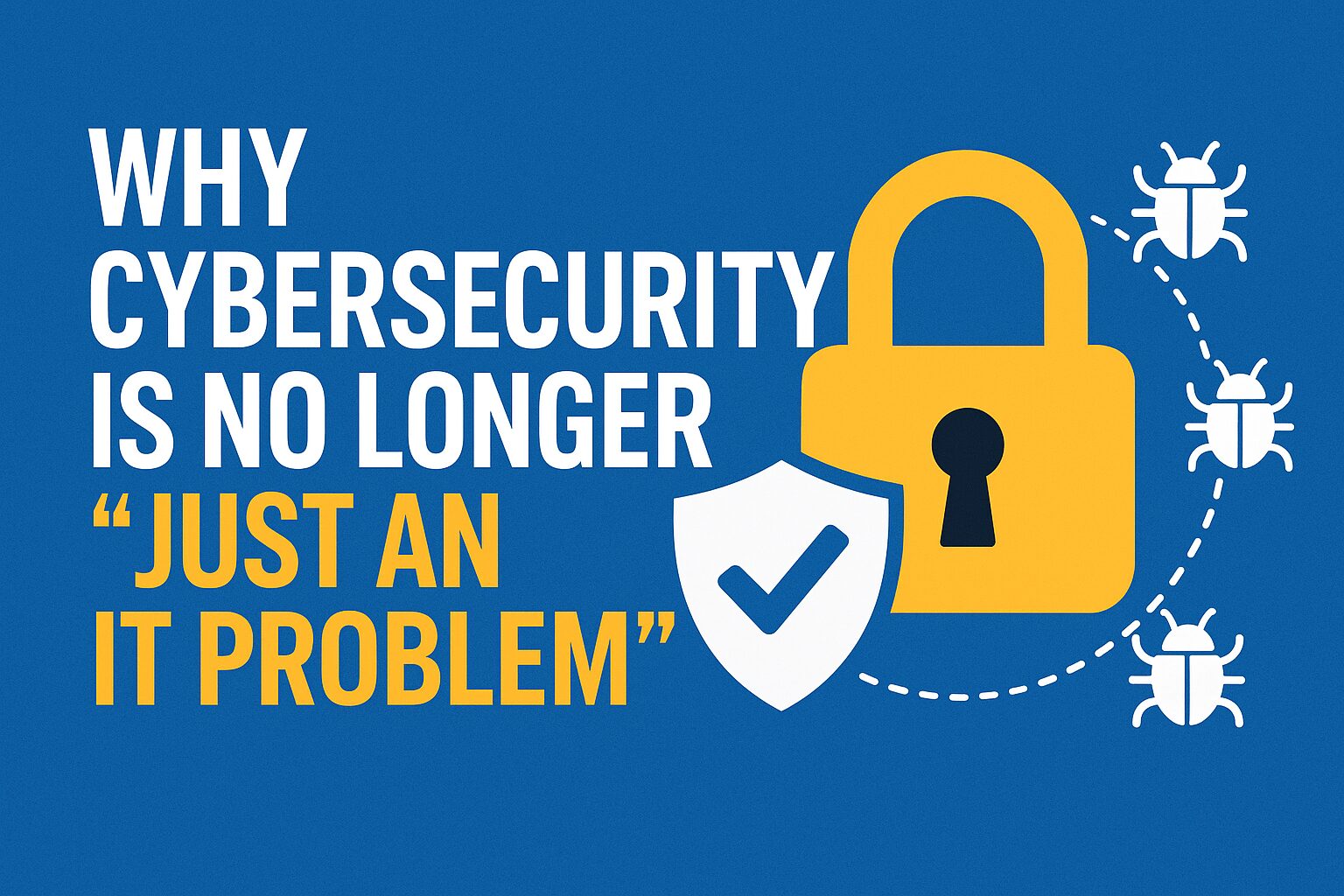For years, cybersecurity was viewed as the responsibility of the IT department—a technical issue to be handled with firewalls, antivirus software, and routine system checks. But in today’s interconnected, digital-first world, that perception is dangerously outdated. Cybersecurity is no longer just an IT problem. It’s a business-wide responsibility that impacts leadership, employees, operations, and even customers.
In this blog, we’ll explore why cybersecurity has outgrown the boundaries of IT and why every department—and every employee—must play a role in protecting an organization.
1. Cybersecurity Threats Are Business Threats
Cyberattacks don’t just compromise data—they threaten the core of business continuity. A single breach can lead to:
- Financial losses from ransom payments, fines, or lost business opportunities.
- Reputational damage that erodes customer trust and brand credibility.
- Legal consequences due to non-compliance with data privacy regulations like GDPR or HIPAA.
For example, high-profile breaches at companies like Target and Equifax didn’t just hit IT teams—they forced leadership to testify before regulators, cost millions in settlements, and permanently damaged customer trust. Clearly, cybersecurity has become a strategic business issue.
2. Human Error Is the Weakest Link
The majority of cyber incidents aren’t caused by sophisticated hacking tools, but by simple human mistakes. Employees clicking on phishing emails, reusing weak passwords, or failing to follow security protocols often open the door for cybercriminals.
That means cybersecurity isn’t just about installing the right software—it’s about building a culture of security across the entire organization. Training, awareness programs, and accountability are as important as any firewall or intrusion detection system.
3. The Rise of Remote Work Expands the Attack Surface
Remote and hybrid work models have blurred the lines between office and home, creating new vulnerabilities:
- Employees often use personal devices that lack enterprise-grade protection.
- Home Wi-Fi networks are less secure than corporate infrastructure.
- Collaboration tools and cloud applications introduce additional entry points for attackers.
When teams work from everywhere, cybersecurity policies must extend beyond IT systems and include HR, operations, and employee management strategies.
4. Customers Expect Strong Cybersecurity
Customers trust businesses with their most sensitive information—credit card details, personal data, and sometimes even health records. When companies fail to safeguard that data, customers don’t just blame IT; they blame the entire organization.
Cybersecurity has become a key part of customer experience and brand loyalty. A breach can send customers straight to competitors, while companies that actively prioritize security often gain a reputation for reliability and trustworthiness.
5. Cybersecurity Is a Leadership Issue
Leaders today can no longer delegate cybersecurity solely to the IT team. Boards and executives are expected to:
- Understand cyber risks in the context of overall business strategy.
- Allocate budgets for proactive protection, training, and response planning.
- Ensure compliance with global data protection regulations.
- Communicate transparently with stakeholders in the event of a breach.
Executives who ignore cybersecurity are not only exposing their companies to risk but may also face personal accountability in legal and regulatory matters.
6. Supply Chain & Third-Party Risks
Modern businesses rely heavily on third-party vendors, cloud providers, and supply chains. Cybercriminals often target these weaker links to gain entry into larger organizations.
For instance, the infamous SolarWinds attack exploited third-party software updates to infiltrate thousands of organizations, including government agencies. This highlights the need for company-wide vendor risk management, not just IT oversight.
7. Building a Cybersecurity-First Culture
If cybersecurity is no longer just an IT problem, then how should companies respond? The answer lies in building a cybersecurity-first culture. Here’s how:
- Leadership Involvement: Executives should champion cybersecurity as a business priority.
- Employee Training: Regular workshops and phishing simulations can prepare staff to recognize threats.
- Cross-Department Collaboration: HR, finance, marketing, and operations all need tailored policies and awareness.
- Incident Response Plans: Every employee should know their role in case of a cyber incident.
- Investment in Tools: Beyond IT infrastructure, companies must invest in compliance tools, secure collaboration platforms, and monitoring systems.
Conclusion
Cybersecurity has outgrown its old definition as “just an IT problem.” Today, it’s a business survival issue, affecting reputation, finances, operations, and customer trust. Organizations that treat cybersecurity as a shared responsibility across every department and level will be better equipped to handle modern threats.
The reality is simple: in the digital age, cybersecurity is everyone’s responsibility. Companies that embrace this mindset will not only reduce risks but also gain a competitive advantage through trust, resilience, and preparedness.







